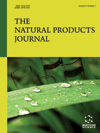-
oa Cytotoxic Secondary Metabolites from the Ascomycetous Fungus Pseudogymnoascus roseus
- Source: Natural Products Journal, The, Volume 15, Issue 3, Apr 2025, E060524229697
-
- 02 Feb 2024
- 09 Apr 2024
- 06 May 2024
Abstract
Fungi found in unique and competitive environments are abundant in bioactive compounds.
The objective of this study is to isolate and identify secondary metabolites from fungi of unique ecological niches and evaluate their cytotoxicity.
The compounds were isolated and purified using silica gel column chromatography, Sephadex LH-20 gel chromatography, and semi-preparative high-performance liquid chromatography (HPLC). The structures of the isolated compounds were determined using NMR and MS. The cytotoxic activities of these compounds were tested by the MTS assay.
Three diphenyl ethers, dechlorodihydromaldoxin (1), violaceol-I (2) and violaceol-II (3), one quinolinone compound, 2-(2-heptenyl)-3-methyl-4(1H)-quinolinone (4), and one α-pyrone nafuredin (5) were isolated from the fermented extracts of Pseudogymnoascus roseus S161. Compound 1 showed modest cytotoxicity against two human tumor cell lines A549 and MCF-7, with IC50 values of 87.12 and 51.07 μM, respectively.
Five compounds were isolated from the fungus P. roseus S161. Compound 1 showed moderate cytotoxicity. This study provided a basis for the development of antitumor drugs.


